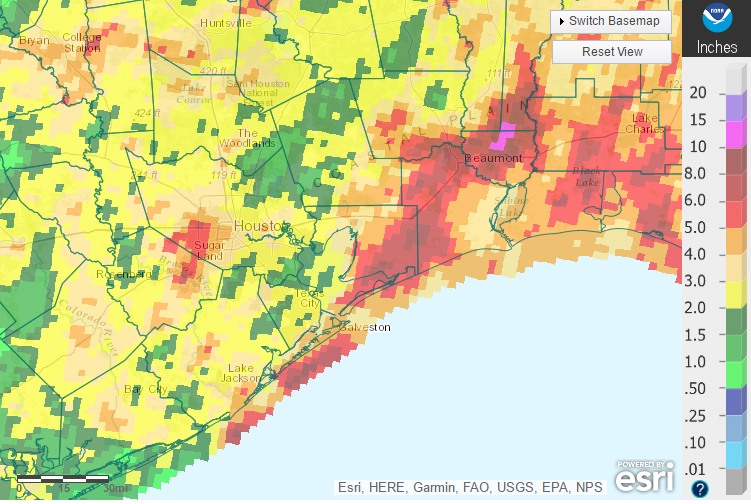Note: Sorry for the late post this morning but for personal reasons I had to stay up very late Tuesday night and Wednesday morning. Fortunately the region’s weather is most benign now, and will be for several days.
Wednesday through Friday
With high pressure and northeasterly winds, Houston will have a few pleasant days to end the week. Highs will be warm, around 90 degrees, but drier-than-normal air will allow for evening temperatures to cool off into the upper 60s to around 70 degrees, and the lower humidity levels will make for pleasant mornings and evenings. Skies will be sunny, with no chance of rain.
Saturday
Another nice day, but we’re going to see the return of southerly winds sometime on Friday night or Saturday, which will begin the process of raising humidity levels and, eventually, rain chances. The day should be mostly sunny with highs near 90 degrees.



